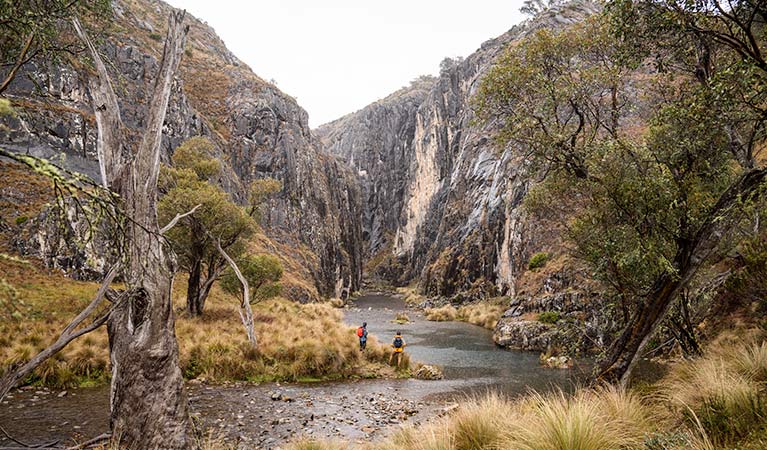Clarke Gorge walking track
High Plains area in Kosciuszko National Park
Overview
The 5km Clarke Gorge walking track follows Cave Creek downstream through limestone gorges and cave formations. Stop along the way to do some fishing and birdwatching.
- Where
- High Plains area in Kosciuszko National Park in Snowy Mountains
- Distance
- 5km return
- Time suggested
- 3hrs 30min - 4hrs 30min
- Grade
- Grade 5
- Trip Intention Form
-
It's a good idea to let someone know where you're going. Fill in a trip intention form to send important details about your trip to your emergency contact.
- Personal Locator Beacon
-
If you're planning to loan a Personal Locator Beacon (PLB) from one of these locations, wait and fill out your trip intention form in person.
- Opening times
Clarke Gorge walking track is open between the October and June long weekends, but may have to close during these times due to poor weather or fire danger.
- What to
bring - Drinking water, hat, sunscreen, sturdy shoes, topographic map, compass, personal locator beacon, clothes for all weather conditions
- Please note
This walk is medium to hard difficulty, requiring several water crossings and scrambling over rock surfaces. Please take care on uneven and wet surfaces and ensure you have good boots and appropriate clothing.
As you hike through the narrow gorge cut by Cave Creek, spectacular limestone cliffs, and cave formations on either side, you’ll never imagine that Clarke Gorge walking track could get any better. But it does, finishing at the top of Cave Creek Falls . There’s a 15m drop of water as well as views down Wilkinsons Gorge. Unsurprisingly, this walk is very popular with photographers.
As well as the beauty of the rock features, some of which were formed more than 400 million years ago, the landscape is dotted with snow gums and black sallee (another high-altitude eucalypt with dark bark), rare discaria shrubs, and vibrant yellow billy buttons. You’ll likely see grey kangaroos bounding in the distance and wedge-tail eagles circling overhead. Fishermen might also want to bring their lines with them because there are a few waterholes along Cave Creek where they can try their luck catching trout, before returning to the walk's starting point at Blue Waterholes campground.
Map
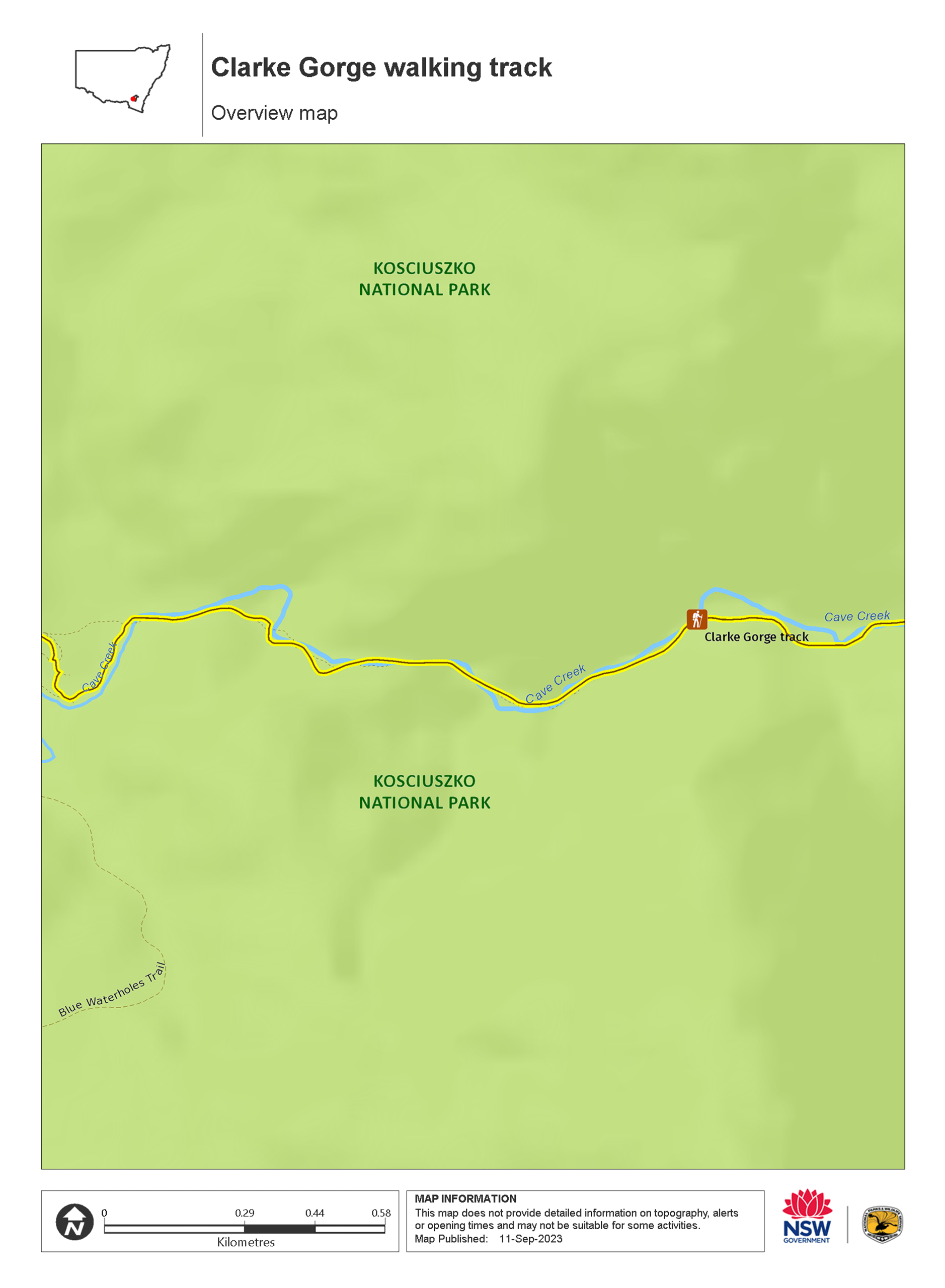
Map
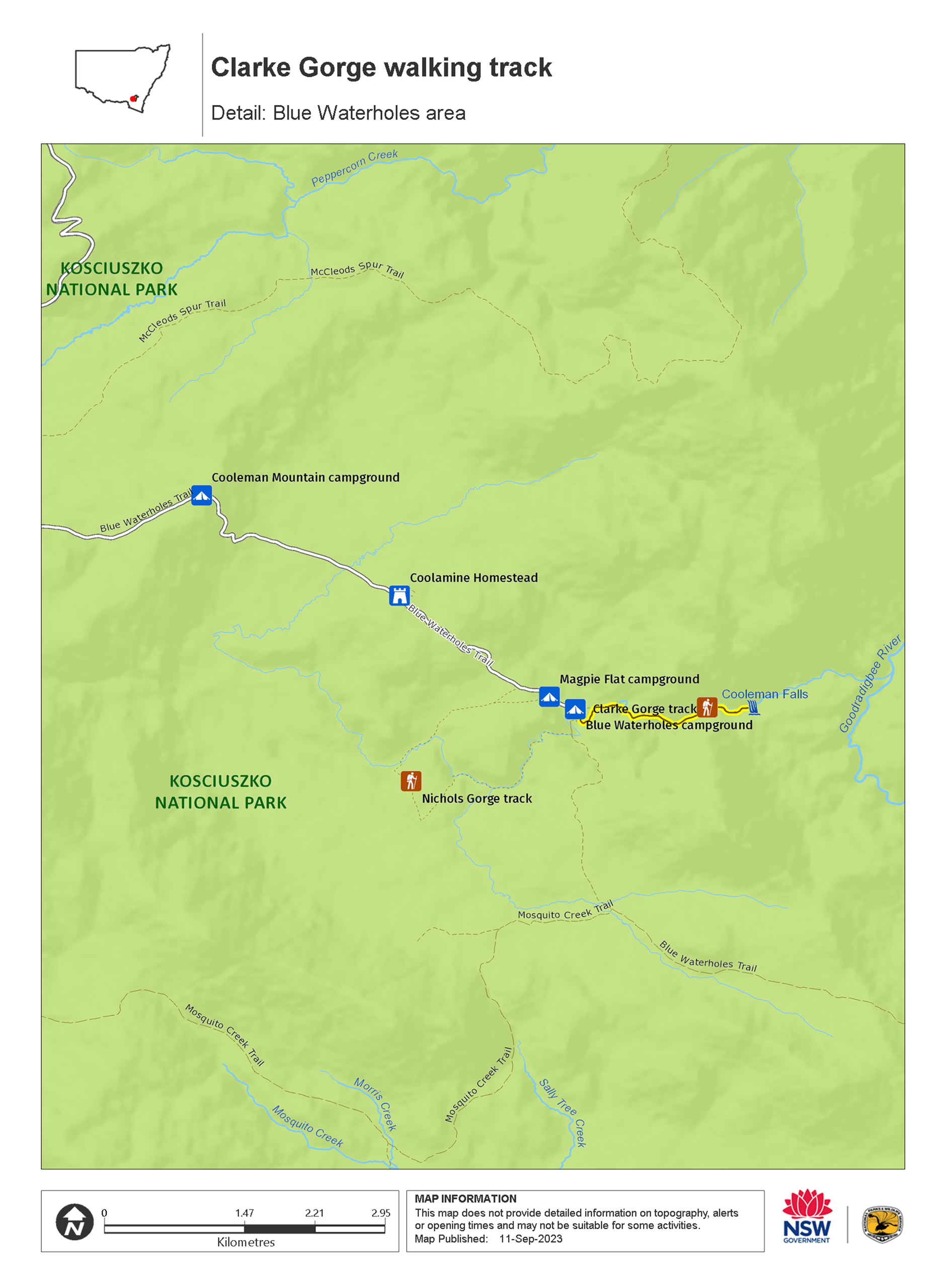
Map legend

Local alerts
For the latest updates on fires, closures and other alerts in this area, see https://www.nationalparks.nsw.gov.au/things-to-do/walking-tracks/kosciuszko-clarke-gorge-walking-track/local-alerts
General enquiries
- National Parks Contact Centre
- 7am to 7pm daily
- 1300 072 757 (13000 PARKS) for the cost of a local call within Australia excluding mobiles
- parks.info@environment.nsw.gov.au
Park info
- in the High Plains area of Kosciuszko National Park in the Snowy Mountains region
Long Plain Road and Tantangara Road (beyond the dam wall) are closed in winter from June to October long weekends. This period may be extended so it’s a good idea to contact the Tumut Visitor Centre. Areas may have to close at times due to poor weather or fire danger.
-
No park entry fees apply in the High Plains area. See vehicle entry fees for other areas in Kosciuszko National Park.
Buy annual pass.
Visitor info
All the practical information you need to know about Clarke Gorge walking track.
Track grading
Features of this track
Distance
5km return
Time
3hrs 30min - 4hrs 30min
Quality of markings
Limited signage
Experience required
Some bushwalking experience recommended
Gradient
Short steep hills
Steps
Occasional steps
Quality of path
Rough unformed track
Getting there and parking
Clarke Gorge walking track is in the Blue Waterholes precinct of Kosciuszko National Park, 25km north east of Snowy Mountains Highway via Long Plain Road and Blue Waterholes trail. The track starts near Blue Waterholes campground.
Road quality
- There's no vehicle access to the trackhead of Clarke Gorge walking track in winter, and roads may close in extreme weather.
- Check the weather before you set out as Long Plain Road and Blue Waterholes trail can become boggy when it rains.
Parking
Parking is available on Blue Waterholes trail, next to Blue Waterholes campground.
Maps and downloads
Permitted
Fishing
A current NSW recreational fishing licence is required when fishing in all waters.
Prohibited
Drones
Flying a drone for recreational purposes is prohibited in this area. Drones may affect public enjoyment, safety and privacy, interfere with park operations, or pose a threat to wildlife. See the Drones in Parks policy.
This area may be a declared Drone Exclusion Zone, or may be subject to Civil Aviation Safety Authority (CASA) rules for flying near airports, aerodromes and helicopter landing sites. See CASA's Drone Flyer Rules.
Commercial filming and photography
Commercial filming or photography is prohibited without prior consent. You must apply for permission and contact the local office.
Pets
Pets and domestic animals (other than certified assistance animals) are not permitted. Find out which regional parks allow dog walking and see the pets in parks policy for more information.
Smoking
NSW national parks are no smoking areas.
Learn more
Clarke Gorge walking track is in High Plains area. Here are just some of the reasons why this park is special:
Experiences and facilities
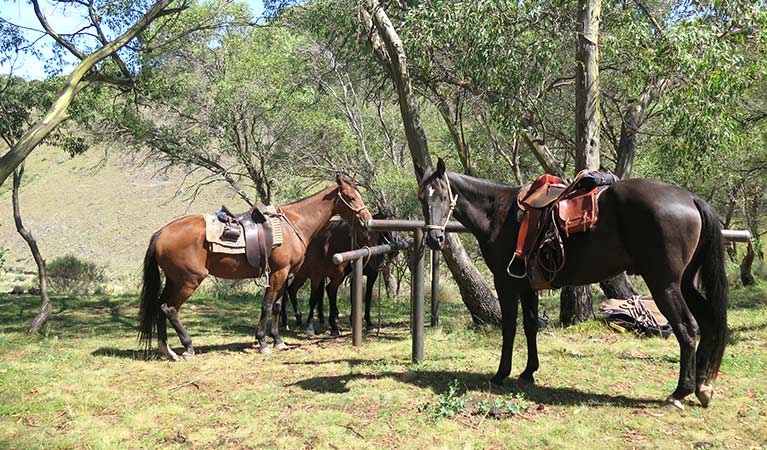
The vast grassland plains, with their hidden huts, are a superb backdrop for walking tracks, mountain bike trails and scenic drives. Blue Waterholes campground is a favourite summer destination to explore stunning walks, creeks, and gorges. There are plenty of campgrounds to choose from across the plains, and with horse riding popular here, many offer facilities for camping with horses. These include: Cooinbil Hut, Long Plain Hut, Ghost Gully, Old Snowy, Wares Yards, Rocky Plain, and Bullocks Hill campgrounds. You can also bring your horse if you’re staying at Currango Homestead, Daffodil Cottage or The Pines Cottage (fees and limits apply, bookings required).
Unique landscapes
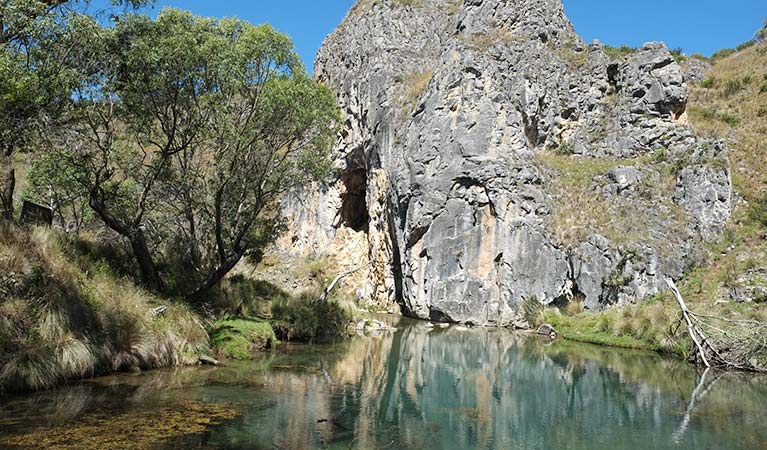
As you explore the High Plains area you’ll see plains of snow grass, herbs and heath. Snow gums and black sallee eucalypts dominate the woodland, while mountain gum, candle bark and alpine ash also appear at higher elevations. The karst environment of the Cooleman Plain is best seen in the steep cliffs, narrow gorges, limestone caves and remarkable blue-tinged spring around Blue Waterholes.
- Clarke Gorge walking track The 5km Clarke Gorge walking track follows Cave Creek downstream through limestone gorges and cave formations. Stop along the way to do some fishing and birdwatching.
- Nichols Gorge walking track The 7km Nichols Gorge walking track, suitable for experienced hikers, follows Cave Creek and passes some karst features before rejoining Blue Waterholes trail.
- Snowy Mountains adventures with Cochran Horse Treks Join Cochran Horse Treks for an unforgettable adventure in Kosciuszko National Park. Their 3 to 7-day guided tours are a great way to experience stunning Snowy Mountains landscapes on horseback.
High country huts and heritage
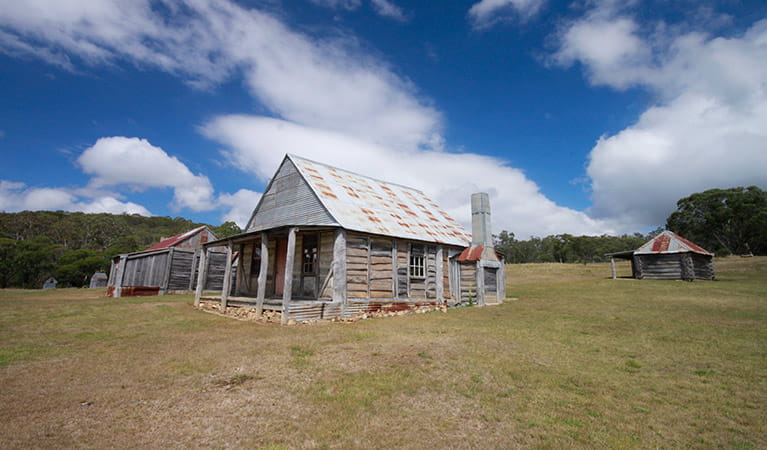
From the mid-1800s into the 1950s, the high plains of Kosciuszko National Park attracted summer graziers who constructed timber and tin huts as shelter throughout the area. More than 20 of these photogenic high country huts are dotted along the many tracks and trails of the plains. Larger properties, like Currango or Coolamine Homesteads, became permanent residences and now provide a fascinating window into pioneer life.
A wonderland for wildlife
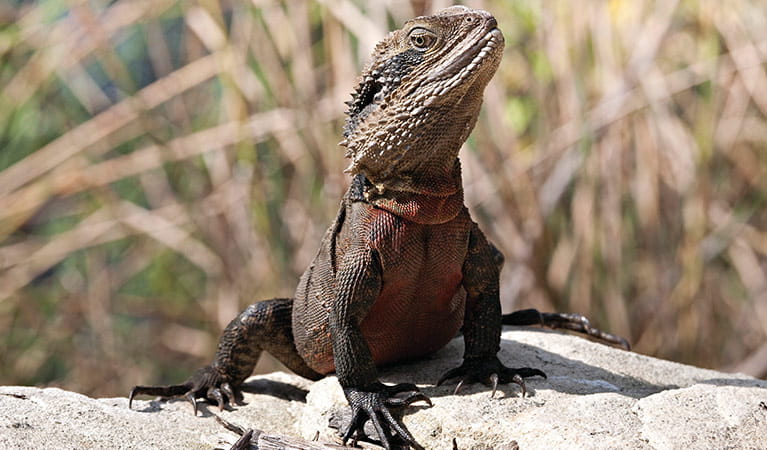
The complex karst environment of Cooleman Plain supports a rich community of animals and plants. Platypus, wombats, brushtail and ringtail possums, eastern grey kangaroos and red-necked wallabies are commonly seen along tracks and at campgrounds. The caves provide an important roosting site for the vulnerable eastern bentwing bat, and winter refuge for one of Australia’s highest populations of eastern water dragons. Keep an eye out for the leafy anchor plant along the banks of Cave Creek - it’s one of Australia’s only deciduous native plants.
- Clarke Gorge walking track The 5km Clarke Gorge walking track follows Cave Creek downstream through limestone gorges and cave formations. Stop along the way to do some fishing and birdwatching.
World-class wilderness
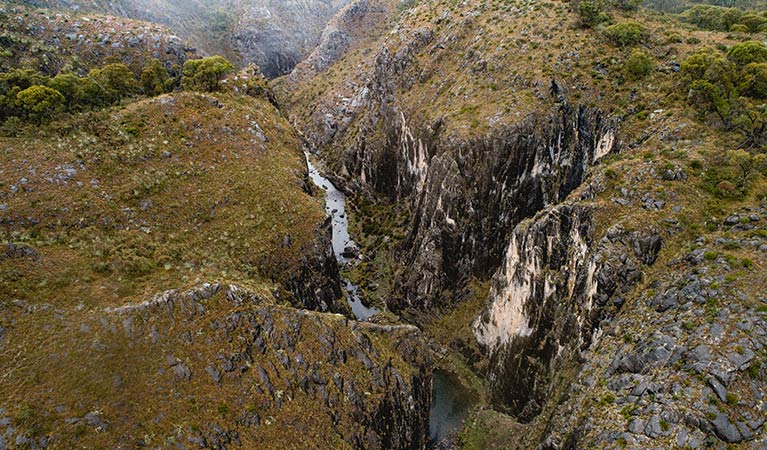
In recognition of Kosciuszko's unique value as a conservation area, it's been named a UNESCO Biosphere Reserve. More than half the area of the park, over 350,000ha, has been declared wilderness and includes the Goobarragandra, Bramina and Bimberi wilderness areas, which cover 61,500ha.
- Snowy Mountains adventures with Cochran Horse Treks Join Cochran Horse Treks for an unforgettable adventure in Kosciuszko National Park. Their 3 to 7-day guided tours are a great way to experience stunning Snowy Mountains landscapes on horseback.
- Snowy Mountains multi-day horse ride treks Immerse yourself in the wild beauty of the Snowy Mountains on a multi-day horse riding trek guided and supported by Reynella Rides. You'll enjoy hearty mountain food and roomy tents as you explore the High Plains area in Kosciuszko National Park.
Plants and animals protected in this park
Animals
-
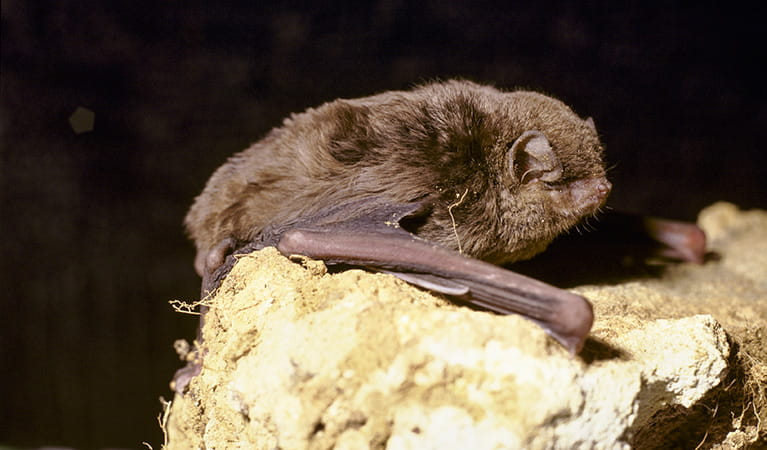
Eastern bentwing-bat (Miniopterus schreibersii oceanensis)
Eastern bentwing-bats congregate in caves across the east and north-west coasts of Australia, in colonies of up to 150,000. These small Australian animals weigh around 13-17g and can reach speeds of up to 50km per hour. Eastern bentwing-bats use both sight and echolocation to catch small insects mid-air.
-

Swamp wallaby (Wallabia bicolor)
The swamp wallaby, also known as the black wallaby or black pademelon, lives in the dense understorey of rainforests, woodlands and dry sclerophyll forest along eastern Australia. This unique Australian macropod has a dark black-grey coat with a distinctive light-coloured cheek stripe.
-

Common ringtail possum (Pseudocheirus peregrinus)
Commonly found in forests, woodlands and leafy gardens across eastern NSW, the Australian ringtail possum is a tree-dwelling marsupial. With a powerful tail perfectly adapted to grasp objects, it forages in trees for eucalypt leaves, flowers and fruit.
-

Superb lyrebird (Menura novaehollandiae)
With a complex mimicking call and an elaborate courtship dance to match, the superb lyrebird is one of the most spectacular Australian animals. A bird watching must-see, the superb lyrebird can be found in rainforests and wet woodlands across eastern NSW and Victoria.
-
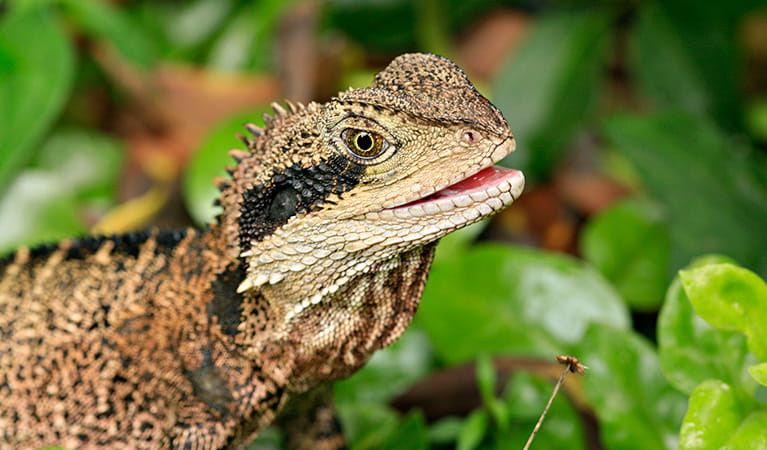
Eastern water dragon (Intellagama lesueurii lesueurii)
The eastern water dragon is a subaquatic lizard found in healthy waterways along eastern NSW, from Nowra to halfway up the Cape York Pensinsula. It’s believed to be one of the oldest of Australian reptiles, remaining virtually unchanged for over 20 million years.
-

Bare-nosed wombat (Vombatus ursinus)
A large, squat marsupial, the Australian bare-nosed wombat is a burrowing mammal found in coastal forests and mountain ranges across NSW and Victoria. The only other remaining species of wombat in NSW, the endangered southern hairy-nosed wombat, was considered extinct until relatively recently.
-
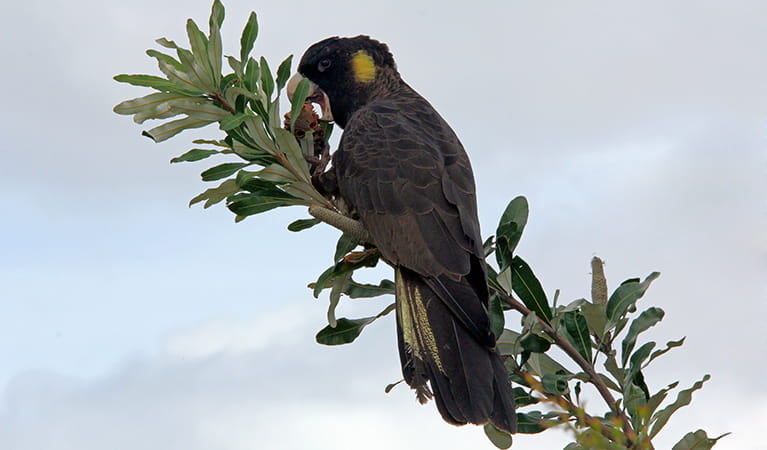
Yellow-tailed black cockatoo (Calyptorhynchus funereus)
The yellow-tailed black cockatoo is one of the largest species of parrot. With dusty-black plumage, they have a yellow tail and cheek patch. They’re easily spotted while bird watching, as they feed on seeds in native forests and pine plantations.
-
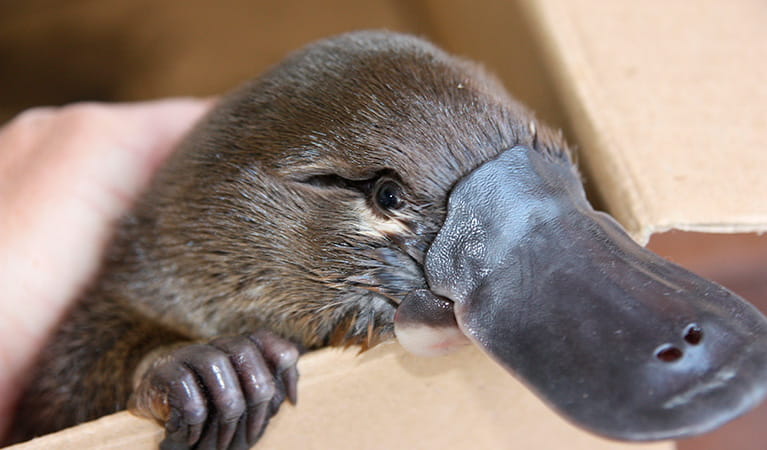
Platypus (Ornithorhynchus anatinus)
One of the most fascinating and unusual Australian animals, the duck-billed platypus, along with the echidna, are the only known monotremes, or egg-laying mammals, in existence. The platypus is generally found in permanent river systems and lakes in southern and eastern NSW and east and west of the Great Dividing Range.
-
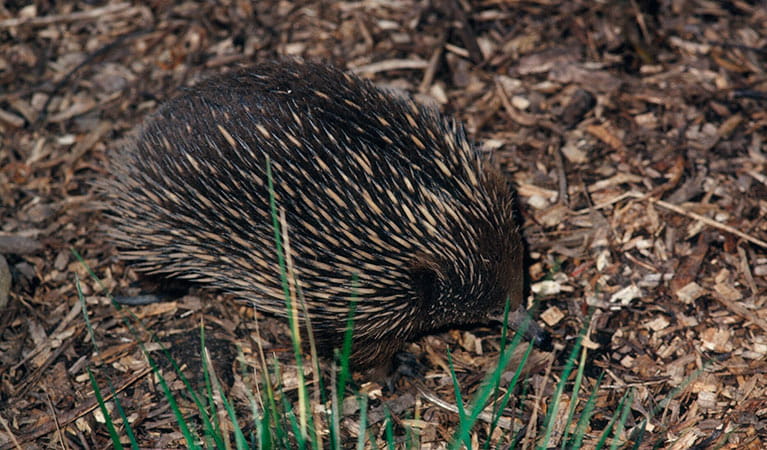
Short-beaked echidna (Tachyglossus aculeatus)
One of only 2 egg-laying mammals in the world, the short-beaked echidna is one of the most widespread of Australian native animals. Covered in spines, or quills, they’re equipped with a keen sense of smell and a tube-like snout which they use to break apart termite mounds in search of ants.
-
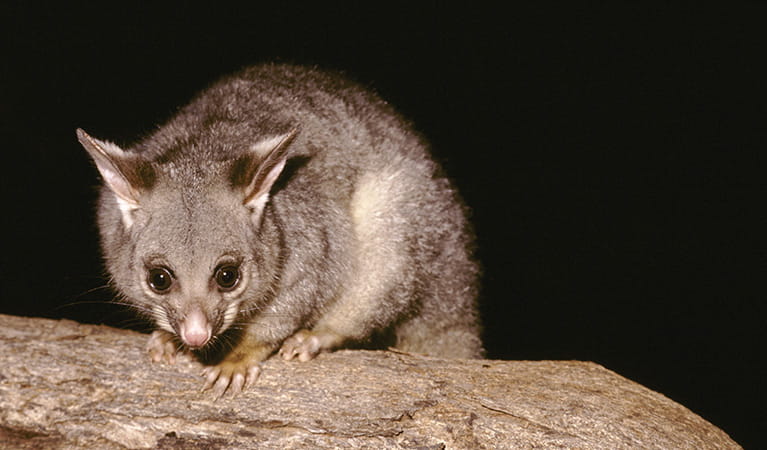
Common brushtail possum (Trichosurus vulpecula)
One of the most widespread of Australian tree-dwelling marsupials, the common brushtail possum is found across most of NSW in woodlands, rainforests and urban areas. With strong claws, a prehensile tail and opposable digits, these native Australian animals are well-adapted for life amongst the trees.

